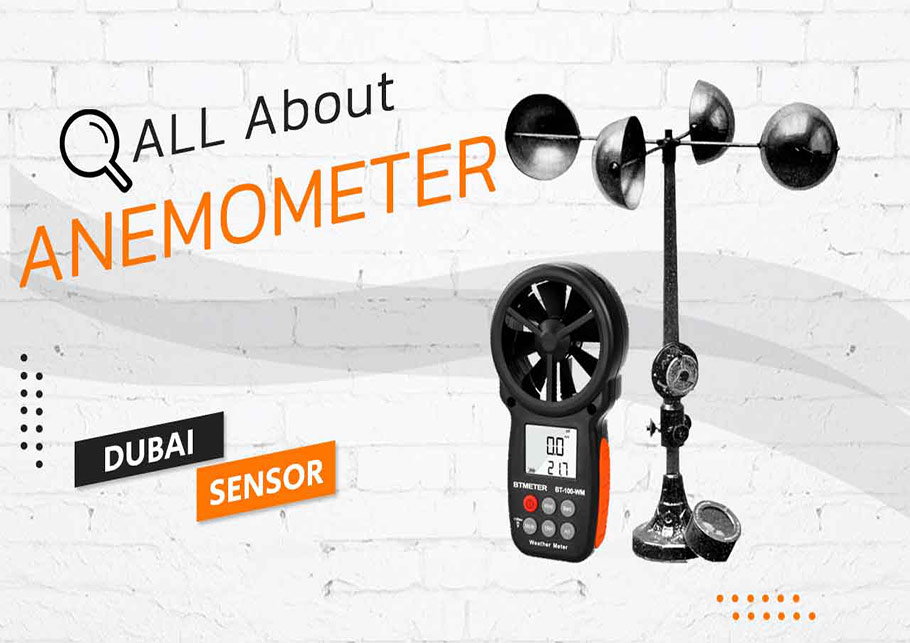How to Preserve and Look After Your Anemometer to Guarantee Durability
How to Preserve and Look After Your Anemometer to Guarantee Durability
Blog Article
Anemometers Unveiled: Understanding Their Relevance in Environmental Surveillance and Precaution
The role of anemometers in environmental monitoring and safety actions is commonly underestimated, yet their significance is indisputable. From weather forecasting to air travel security, anemometers play a crucial duty in providing precise information that educates decision-making procedures and boosts total safety and security.
History of Anemometers
The evolution of anemometers can be mapped back to the ancient civilizations where simple wind gauging gadgets were initial used. These early wind dimension tools laid the structure for the advancement of extra advanced anemometers over time. Among the earliest well-known anemometers was the hemispherical mug anemometer created by Leon Battista Alberti in the 15th century. This design included four hemispherical cups that collected wind energy, giving a measurement of its intensity based on the speed of rotation.
Over the years, developments in technology led to the advancement of more modern-day anemometers, consisting of ultrasonic anemometers and laser Doppler anemometers, supplying enhanced precision and efficiency in measuring wind speed and direction. The history of anemometers showcases an exceptional trip of advancement and development in the field of meteorology.
Sorts Of Anemometers
Throughout the field of weather forecasting, different sorts of anemometers have been established to precisely determine wind rate and instructions. The most common type is the mug anemometer, which includes three or four cups mounted on straight arms that rotate with the wind. As the mugs spin, the speed at which they rotate is directly proportional to the wind speed. Another extensively utilized type is the vane anemometer, which features a tail or fin that aligns itself with the wind direction. This placement enables the tool to figure out the wind instructions. Sonic anemometers utilize ultrasonic signals to gauge wind rate and instructions precisely. They are frequently made use of in research applications because of their high precision. Hot-wire anemometers operate based upon the concept that the cooling effect of wind on a heated wire is symmetrical to the wind speed. These anemometers appropriate for gauging reduced wind rates with high accuracy. Each kind of anemometer has its staminas and is selected based upon the particular demands of the surveillance job handy.
Applications in Weather Forecasting
Having actually discussed the various sorts of anemometers used in weather forecasting for gauging wind speed and direction, it is crucial to explore their practical applications in the field. Anemometers play a vital duty in weather forecasting by giving precise and real-time information on wind problems (anemometer). Meteorologists make use of anemometers to keep an eye on wind rate and instructions to anticipate weather condition patterns, issue cautions for serious weather condition events like tornados, twisters, and storms, and evaluate weather for air travel safety
In weather forecasting, anemometers aid in comprehending regional and local wind patterns, which are vital for anticipating climate modifications and establishing climatic trends. These gadgets are additionally used in research to examine microclimates, urban heat islands, and air contamination dispersion. Additionally, anemometers are have a peek at these guys used in farming to maximize crop administration techniques, such as watering and pesticide application, based upon wind conditions.
Importance in Air Travel Safety
An integral facet of making certain aeronautics safety and security depends on the precise surveillance of wind conditions making use of anemometers. Anemometers play a vital role in aviation by supplying real-time information on wind speed and direction, helping pilots in making educated choices throughout trip, take-off, and landing. Solid and unforeseeable winds can substantially affect airplane procedures, making it important for aeronautics authorities to rely on exact wind measurements to make certain the security of travelers and crew.

In the vibrant environment of aeronautics, where even small company website changes in wind rate and direction can have extensive impacts, anemometers stand as important devices for promoting secure and safe flight.
Duty in Environmental Research
Anemometers play an essential role in ecological research study by giving necessary data on wind speed and instructions. By properly gauging wind characteristics, anemometers assist scientists evaluate the activity of toxins in the air, analyze the influence of commercial exhausts, and forecast the spread of impurities in the setting.


Final Thought
In final thought, anemometers have played an important role in ecological monitoring and safety actions. Comprehending the importance of anemometers is go to this website important for properly measuring wind rate and instructions, which is essential for forecasting weather patterns, making certain secure aviation operations, and carrying out environmental research studies.
One of the earliest known anemometers was the hemispherical cup anemometer invented by Leon Battista Alberti in the 15th century. Over the years, advancements in modern technology led to the development of even more contemporary anemometers, including ultrasonic anemometers and laser Doppler anemometers, offering raised accuracy and performance in measuring wind speed and direction. Hot-wire anemometers run based on the principle that the cooling effect of wind on a warmed cord is proportional to the wind rate. Meteorologists use anemometers to monitor wind rate and direction to anticipate weather patterns, problem cautions for extreme weather condition occasions like twisters, typhoons, and storms, and assess atmospheric problems for aviation security.
Understanding the importance of anemometers is essential for precisely determining wind rate and direction, which is important for anticipating climate patterns, ensuring safe air travel procedures, and carrying out ecological researches. (anemometer)
Report this page